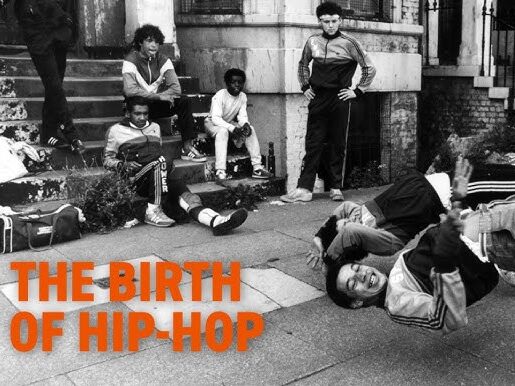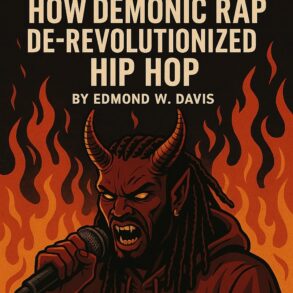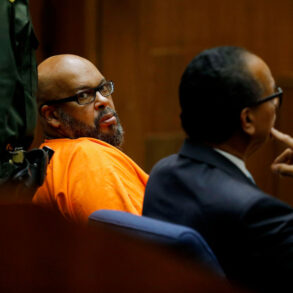When I arrived at the Chicago premiere of the documentary Microphone Check, it was clear that the theater didn’t know how hot this film was going to be. The staff behind the concession stand was running around, filling popcorn buckets and pouring drinks. It was a couple of minutes past showtime, and apparently the film had already started—the customary 15 minutes of previews either wasn’t going to happen, or had begun before the start time.
“They’re all here for Microphone Check,” said someone behind the counter to the theater manager. “Should we pause the film?”
Exploring the history of hip-hop

Microphone Check is a documentary about the history of hip-hop and its origins. The film highlights some of the creators of hip-hop who are not often mentioned in the history and fills the gaps in the story between its founding in 1973 and the start of the 1980s. The documentary features Coke La Rock, credited for being the first MC, Sharon “Sha-Rock” Gree, who is considered to be the first female MC and Lauree “Trixie” Myers, the first breakdancer. It also looks at other elements of the culture, such as graffiti, and features an interview with Darryl McCray, who is “Cornbread,” the first modern graffiti artist.
Many fans of hip-hop trace its origins to a 1973 party hosted by DJ Kool Herc at 1520 Sedgwick Ave. in the Bronx. But according to director Tariq Nasheed, there is more to the story than that, and his concern is that much of the credit for its creation has been misplaced.
DJ Kool Herc, Grandmaster Flash and Africa Bambaataa are the three names that often come up when people speak about hip-hop’s creation. But Nasheed argues that the culture began to form prior to these three DJs, and he wants to ensure that the Black American founders of hip-hop who don’t have Caribbean roots have their stories told, too.
The godfather of hip-hop
“The godfather of hip-hop is our brother Kool Herc who was from Jamaica,” says Nasheed. “He had the first technical hip-hop party that encompassed the break beats, the break dancers, everything to graffiti. Because he is the godfather, a lot of the media narrative is that he brought hip-hop from Jamaica to the Americas.”
But Nasheed would like to see credit given to the non-Carribean Black Americans who were part of the creation of hip-hop culture. Fifty years later, many of hip-hop’s founders like Disco King Mario have passed on, and Nasheed wants to make sure that their stories are told before the narrative forgets them altogether.

“Surprisingly, many of them are still alive,” says Nasheed. “They’re up there in age and very important, too. A lot of the media will just wait until people die off and when they die off you can really go roughshod and tell anything you want to tell because they’re not here to clarify anything no more. So we did a phenomenal thing while getting these people while they’re still alive, to tell the story and get everything written in stone.”
Throwing the pennies together
Microphone Check was largely funded by fans. The documentary had a Kickstarter that raised more than $260,000 and had more than 2,000 donors.

“These record labels have artists that they need to promote,” says Nasheed. “So they do a documentary. They will try to flip it as a way to promote their artists. So what they’ll do, they’ll talk about hip-hop, the history of it for a quick second, and then jump to the 2000s.
“I didn’t want to do that,” says Nasheed.” I didn’t focus on too many modern rappers in this film. We stuck to the ’70s most of the movie. People talk about that party that Kool Herc had [in 1973]; no one ever talks about the before and after… what happened from ’73 to 1979 when the Sugarhill Gang released the first hip-hop record. There’s a big gap that’s never really talked about. We dig deep into that gap.”
Nasheed says that the willingness of fans to pay for its production is a testimony to hip- hop fans’ desire to hear the story of the genre, especially when many modern documentaries are funded by large production companies and record labels.
“You can gauge the excitement level when you have the community get together and throw the pennies together to make the funding happen,” says Nasheed. “That shows a lot of interest. People are very interested in seeing the story, so I’m very thankful for the crowd and [for] the audience who helped fund the production of the movie because that puts a certain energy on it.”
Hip-hop culture: The influential genre
Hip-hop culture has had an undeniable influence on branding, fashion and music at a global level. When brands decide what’s popular, they often look to the streets. Much of what ends up on the runway during fashion week is inspired by what hip-hop artists and fans are wearing. These styles are reproduced in the looks that you find in fashion magazines and retail stores.
“Hip-hop culture dictates what goes on on the corporate level,” says Nasheed. “They have whole market research teams that sit around, studying the streets, studying hip- hop culture, studying our culture to see what’s going to be the next thing so they can get in front of it and kind of capitalize off of it.”
Microphone Check premiered in theaters in 12 cities between May 22 and May 25, but if you missed it in theaters, don’t worry! It can be purchased on Blu-Ray.
Photo courtesy of Tariq Nasheed
This post was originally published on this site be sure to check out more of their content.







